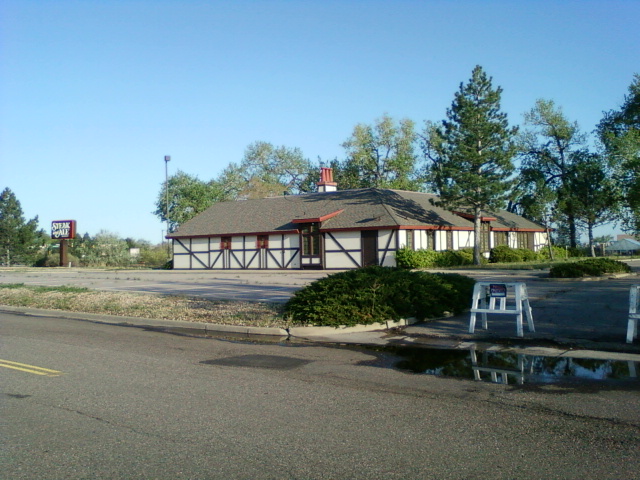Steak & Ale, founded in 1966 by Dallas entrepreneur Norman Brinker, revolutionized American dining by creating the casual steakhouse category. You’d recognize its Tudor-style décor, generous salad bars, and fresh honey wheat bread that made steakhouse quality accessible to middle-class families. Though the chain closed in 2008 after expanding to nearly 300 locations, it’s now making a comeback under new ownership with the first new restaurant announced for 2024. The full story reveals how one Texas concept transformed how America dines out.
The Birth of a Texas Dining Institution
In 1966, Dallas entrepreneur Norman Brinker reshaped the American restaurant landscape with the opening of Steak & Ale at Lemmon Avenue near Oak Lawn. From these humble beginnings in the Oak Lawn neighborhood, Brinker created something remarkable—a restaurant that bridged the gap between casual dining and upscale steakhouses.
The Tudor-style décor with rich wood beams, stucco walls, and stained glass evoked an English countryside inn. You’d be greeted by the aroma of freshly baked honey wheat bread and the sight of a serve-yourself salad bar—both trailblazing concepts for the era. Brinker’s vision was clear: deliver steakhouse quality at prices middle-class families could afford in an atmosphere that felt special yet approachable.
Steak & Ale’s signature offerings included carefully prepared prime rib and New York strip steaks that would become the cornerstone of its menu for decades. Like Austin’s Dirty Martin’s Place, Steak & Ale quickly became a cherished dining institution with its own history and devoted local following.
Norman Brinker’s Revolutionary Casual Dining Vision
View this post on Instagram
Norman Brinker wasn’t just opening another restaurant in 1966—he was crafting an entirely new dining category. His vision for Steak & Ale bridged the gap between fast food and fine dining, pioneering affordable sophistication for middle-class families who craved quality steaks without the formality.
You’d experience innovations that would soon become industry standards: the salad bar, servers who introduced themselves by name, and Tudor-style surroundings that balanced elegance with comfort. By redefining steakhouse experiences, Brinker created a formula that balanced upscale ambiance with approachable pricing.
This revolutionary approach proved that sophisticated dining could be accessible to everyday Americans. The concept was so successful that it established casual dining as a major restaurant category and influenced countless chains that followed. Much like how Gary Keller’s vision transformed a small Austin operation into a global powerhouse, Brinker’s concept reshaped the restaurant landscape. Brinker later sold Steak & Ale to Pillsbury in 1976, validating his visionary business model and setting the stage for his later leadership of other iconic brands.
Peak Years: How Steak and Ale Transformed American Restaurants
Steak & Ale’s golden era throughout the 1970s and 1980s reshaped America’s restaurant landscape permanently. Founded in 1966 in Dallas, the chain expanded to hundreds of locations nationwide after Pillsbury’s acquisition provided substantial financial backing.
You’d find elements we now take for granted – the chain popularized salad bars and created a blueprint for combining upscale dining touches with family-friendly comfort. Its warm English-inn-inspired décor and signature honey wheat bread became hallmarks of the casual-dining revolution. The restaurant was founded by Norman Brinker, who would later help establish other successful concepts. Much like Nolan Ryan changed baseball with his longevity and records, Steak & Ale transformed the dining industry with simple but powerful innovations.
Despite their influence, increasing competition from emerging chains began eroding their unique market position. Brand loyalty slipped as competitors offered comparable quality at similar price points. Nevertheless, Steak & Ale had already cemented its legacy as the template that would inspire generations of American restaurants.
The Fall of an Icon: Understanding the 2008 Closure

While the restaurant chain had once enjoyed widespread acclaim and industry influence, Steak & Ale’s dramatic downfall in 2008 marked the end of a dining institution that had shaped American casual restaurants for decades.
The collapse stemmed from mounting corporate financial strain at the Metromedia group of restaurant companies. You could see the warning signs—vendors demanding cash on delivery and lenders pressing for repayment. These supply-chain pressures made daily operations increasingly difficult.
Meanwhile, the market had changed. Even after once operating over 200 locations, the brand’s affordable-steak positioning lost distinctiveness as rivals flooded casual dining. When S&A Restaurant Corp. (operator of Steak & Ale and Bennigan’s company units) filed for Chapter 7 liquidation, all company-owned Steak & Ale locations closed, ending a restaurant legacy that had once boasted roughly 280 units at its peak.
Resurrection: The Journey Back to American Tables
View this post on Instagram
After a years-long absence from the American restaurant landscape, the Steak & Ale brand began its journey back through a carefully orchestrated revival. In 2015, industry veterans Paul and Gwen Mangiamele acquired the intellectual property under Legendary Restaurant Brands, LLC to spearhead the comeback.
You’ll notice their brand-loyalty revitalization started subtly—introducing Steak & Ale classics at Bennigan’s locations while nurturing a passionate online fan community. Those reconnection strategies set the stage for a 2023 announcement of a multi-unit development agreement, with the first new location slated for Burnsville, Minnesota, in 2024. The Mangiameles invested personally to acquire and revitalize both Bennigan’s and Steak & Ale, underscoring their commitment to these beloved brands.
The resurrection preserves what you loved—the Tudor décor, honey wheat bread, and salad bar—while adapting to contemporary expectations in service and menu design.
Legacy and Lasting Impact on Modern Restaurant Culture
Four major innovations from Steak & Ale continue to shape today’s restaurant landscape, cementing its place in culinary history. The self-serve salad bar changed how guests interact with their meal. Affordable premium steaks democratized fine dining for middle-class Americans. The Tudor-style ambiance created a template for casual-dining aesthetics that countless chains have echoed. Founder Norman Brinker pioneered practices that later became standards throughout the industry.
Perhaps most substantially, Steak & Ale’s corporate journey—from independent concept to large-company ownership to brand consolidation—mirrors the evolution of modern restaurant groups. Brand loyalists, spanning multiple generations, continue championing its return, evidenced by tens of thousands of fans anticipating the chain’s revival under new stewardship.


